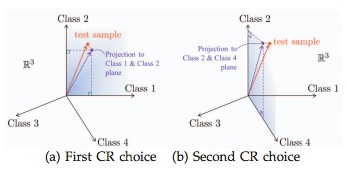TR2013-132
Classification and Boosting with Multiple Collaborative Representations
-
- , "Classification and Boosting with Multiple Collaborative Representations", IEEE Transactions on Pattern Analysis and Machine Intelligence, DOI: 10.1109/TPAMI.2013.236, December 2013.BibTeX TR2013-132 PDF
- @article{Chi2013dec,
- author = {Chi, Y. and Porikli, F.},
- title = {Classification and Boosting with Multiple Collaborative Representations},
- journal = {IEEE Transactions on Pattern Analysis and Machine Intelligence},
- year = 2013,
- month = dec,
- doi = {10.1109/TPAMI.2013.236},
- issn = {0162-8828},
- url = {https://www.merl.com/publications/TR2013-132}
- }
- , "Classification and Boosting with Multiple Collaborative Representations", IEEE Transactions on Pattern Analysis and Machine Intelligence, DOI: 10.1109/TPAMI.2013.236, December 2013.

Abstract:
Recent advances have shown a great potential to explore collaborative representations of test samples in a dictionary composed of training samples from all classes in multi-class recognition including sparse representations. In this paper, we present two multi-class classification algorithms that make use of multiple collaborative representations in their formulations, and demonstrate performance gain of exploring this extra degree of freedom. We first present the Collaborative Representation Optimized Classifier (CROC), which strikes a balance between the nearest-subspace classifier, which assigns a test sample to the class that minimizes the distance between the sample and its principal projection in the selected class, and a Collaborative Representation based Classifier (CRC), which assigns a test sample to the class that minimizes the distance between the sample and its collaborative components. Several well-known classifiers become special cases of CROC under different regularization parameters. We show classification performance can be improved by optimally tuning the regularization parameter through cross validation. We then propose the Collaborative Representation based Boosting (CRBoosting) algorithm, which generalizes the CROC to incorporate multiple collaborative representations. Extensive numerical examples are provided with performance comparisons of different choices of collaborative representations, in particular when the test sample is available via compressive measurements.